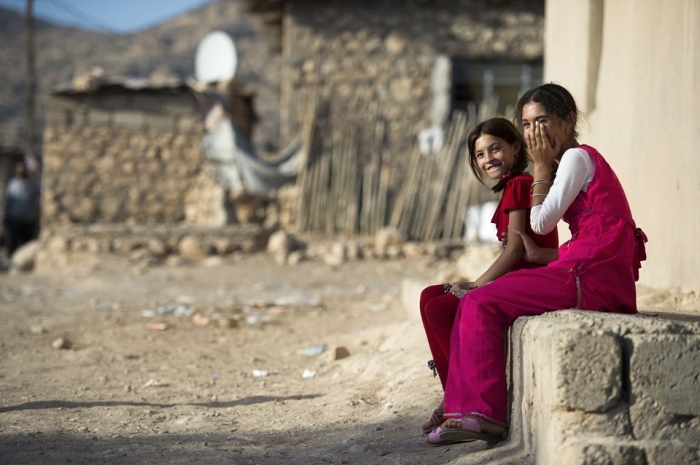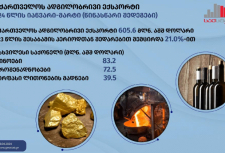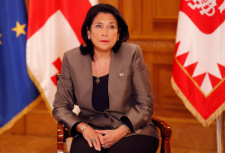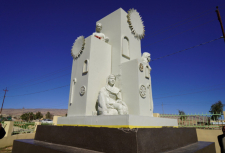Policy Options for Social Integration of Yezidi People in Europe: the Goal of a Society for All

Authors -Olga A. Vorkunova, Samvel Kochoi
Part 1
A social integration perspective in Europe provides an organizing framework for understanding the changing processes of complex identities. For Yezidi people, it is about new methods and forms of post-genocide survival. The increase in the number of displaced peoples in Europe is one of the most serious challenges facing Europe at large. Social integration requires capacity development, networking, the design of development programs, and recognition of people’s right to development. The policy challenge is to facilitate access to improved livelihood opportunities for Yezidi communities which have national aspirations of their own and suffer from post-genocide trauma. They are keen on preserving their cultural integrity and language.
The Yezidis have been an integral and important part of Middle Eastern history since the tenth century AD. Yezidis experienced mass massacres (seventy-three attempts), during which the whole population diminished from 23 million in the fourteenth century to two million in the eighteenth century, and to less than one million in the 1990s. Today, about 80 percent of the Yezidis (approximately 500,000 people) in Iraq live in the Nineveh province (Sinjar). In Syria, the Yezidi minority live in Aleppo, Al Hasaka, Al Qamishli, and Afrin.The Yezidi Genocide involved repeated, extensive inter-ethnic massacres. Extreme violence in the form of starvation, epidemic, and abuse was also indirectly responsible for further mass deaths. The Yezidi Genocide in 2014 by ISIS contains major trends also found in previous genocide attempts. Techniques were devised, revised, or improvised to make people suffer as much as possible, either as a prelude to or in the process of being killed, as well as to humiliate and emotionally torture them (most obviously through having to watch, or participate in, the sexual abuse or death of other family members).The gendered attack on Yezidi communities through rape and sexual mutilation was a major facet of this extreme violence. It often involved quite ritualized mutilation in the act of killing—drawing on a repertoire conjoining sacrificial and religious motifs with a powerful erotic charge. This repertoire presumably reflects both the cultural context of the massacres and the psychology of their perpetrators. Furthermore, their stereotypical character may have something to do with the necessary dynamics of mass killing. The Yezidi situation is dangerous in the light of regional powers’ (Iran, Turkey, Saudi Arabia) competition and rivalry in Iraq and Syria. The Yezidis seek international support and protection under the auspices of UN and like-minded powers.
Tags:
Policy Options for Social Integration of Yezidi People in Europe: the Goal of a Society for All

Authors -Olga A. Vorkunova, Samvel Kochoi
Part 1
A social integration perspective in Europe provides an organizing framework for understanding the changing processes of complex identities. For Yezidi people, it is about new methods and forms of post-genocide survival. The increase in the number of displaced peoples in Europe is one of the most serious challenges facing Europe at large. Social integration requires capacity development, networking, the design of development programs, and recognition of people’s right to development. The policy challenge is to facilitate access to improved livelihood opportunities for Yezidi communities which have national aspirations of their own and suffer from post-genocide trauma. They are keen on preserving their cultural integrity and language.
The Yezidis have been an integral and important part of Middle Eastern history since the tenth century AD. Yezidis experienced mass massacres (seventy-three attempts), during which the whole population diminished from 23 million in the fourteenth century to two million in the eighteenth century, and to less than one million in the 1990s. Today, about 80 percent of the Yezidis (approximately 500,000 people) in Iraq live in the Nineveh province (Sinjar). In Syria, the Yezidi minority live in Aleppo, Al Hasaka, Al Qamishli, and Afrin.The Yezidi Genocide involved repeated, extensive inter-ethnic massacres. Extreme violence in the form of starvation, epidemic, and abuse was also indirectly responsible for further mass deaths. The Yezidi Genocide in 2014 by ISIS contains major trends also found in previous genocide attempts. Techniques were devised, revised, or improvised to make people suffer as much as possible, either as a prelude to or in the process of being killed, as well as to humiliate and emotionally torture them (most obviously through having to watch, or participate in, the sexual abuse or death of other family members).The gendered attack on Yezidi communities through rape and sexual mutilation was a major facet of this extreme violence. It often involved quite ritualized mutilation in the act of killing—drawing on a repertoire conjoining sacrificial and religious motifs with a powerful erotic charge. This repertoire presumably reflects both the cultural context of the massacres and the psychology of their perpetrators. Furthermore, their stereotypical character may have something to do with the necessary dynamics of mass killing. The Yezidi situation is dangerous in the light of regional powers’ (Iran, Turkey, Saudi Arabia) competition and rivalry in Iraq and Syria. The Yezidis seek international support and protection under the auspices of UN and like-minded powers.
Tags:

























